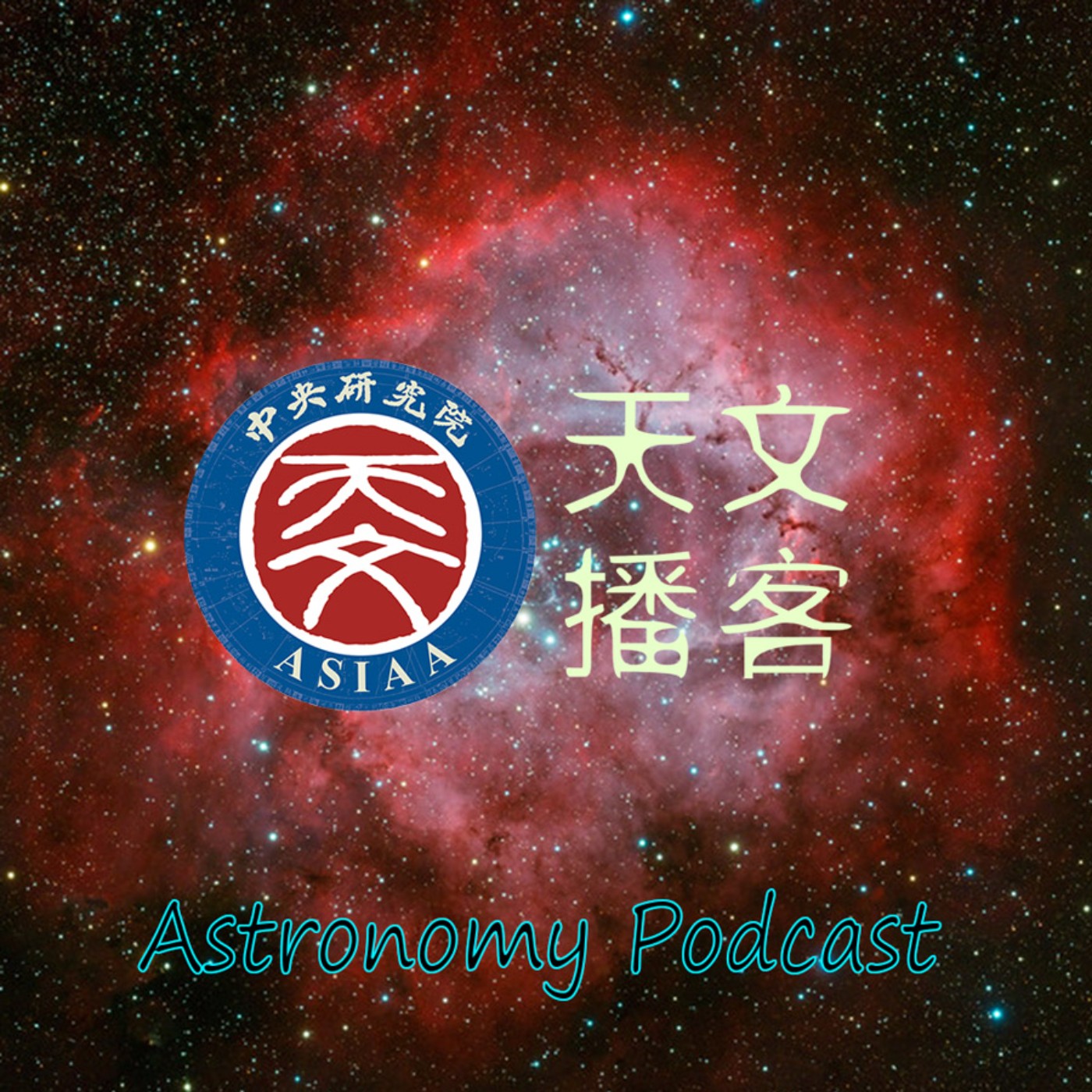探索XO月球 Discover Exomoon!
Description
XO醬我聽過,exomoon是啥?
原來,不只太陽系的行星有衛星,太陽系外的行星也有衛星!
並且更難找,因為非常小!
但滿有可能蘊藏外星生命!
當然得好好找一找。
本集特別邀請全世界第一位"有可能"發現了太陽系外月亮的天文學家 Alex Teachey 博士談談這麼獨特的發現。
Alex 從2020年起在中研院天文所擔任博士後研究,正式英文 title 比其他博士後研究還多出了一個 Distinguished 的字眼,可見他的資歷非常難得。
本集內容講英語
music by audionautix.com
Transcription 逐字稿:
Welcome to the astronomy podcast produced by Academia Sinica Institute of Astronomy and Astrophysics, Episode One. I'm today's show host Lauren Huang. Very happy to invite a "superb" PostDoc Fellow Alex Teachey to tell us about "Discover Exomoons". Hi, Alex! Hello thanks for having me. Did I pronounce your name correctly? um, Alex Teachey, that's right! So Alex, tell us about the work that you do in Academia Sinica.
Yeah so what I do is I work on finding these things called exomoon. And these are moons orbiting Exoplanets. At this point astronomers over the last a few decades have discovered something like a few thousand exoplanet - these are planets orbiting other stars outside of our solar. So that's really been amazing work. But now we're trying to go one step farther and find the Moon of those planets. It's very hard to do, Not very many people working on it, but I feel very fortunate opportunity do this work, because I think it's very exciting looking for these moons.
Why do you care about these exomoons? Yeah I think these moons are potentially really amazing places if you look at the moons in our solar system, of course we have our own moon but there are many other moons in the solar system especially around Jupiter and Saturn and Uranus and Neptune, these are amazing places that, you know, if they orbited the Sun rather than orbiting one of these planets we probably all would have grown up knowing their names. Because they're just as fascinating places as Mercury and Venus, Mars, the planets we're familiar with. At least moons are really gorgeous and very diverse very different from one another. You can just take a look at these pictures of these moons and see how different they are from one another. and maybe I'll tell you a little bit more about those moans but the moons are fascinating and so we think that You know moons in other planetary systems stand to be just as amazing places and just as worthy of discovery in and getting to know them. We think for example that these moons could tell us something about how those planetary system formed, and how they evolved. And, Actually hold a mirror up to our own solar system. Whenever we're looking At these other planetary system, we're really learning more about ourselves as well. Where do we fit in to the Galaxy and what ways are we ordinary and in what ways are we not ordinary. In what ways are we actually maybe quite unusual. This is very much an open question.
How many ways to get moons formed? Yeah but we think there's three main pathways for forming moons. The first way is the way most astronomers think we got our own Moon, And that is through an impact. So what we think happened was that a giant protoplanets maybe the size of Mars slammed into the early Earth this is something 4.5 billion years ago.
This impact occurred and a whole bunch of material was blown off of the surface of the Earth and eventually coalesced and formed our moon Now the second way is through Capture. Sort of a gravitational capture of this Moon. Do you have what is originally a free-floating planet, or small object floating around by itself and then is captured gravitationally by the more massive Planet and then it Becomes a moon we think for example the largest moon of Neptune,
More Episodes
Published 04/21/22
這裡沒有張惠妹的歌「站在高崗上」提到的綠波海茫茫,在這裡只有黃土茫茫,而且缺氧。
由天文所主導之為阿塔卡瑪大型毫米及次毫米波陣列(簡稱”ALMA”)研發的「第一頻段接收機」於2016年被採用,並已於2021年開始接受訊號,聽聽科學家如何努力的刻服惡劣環境,堅持至今。努力工作時,又看到了哪些有趣的動物呢?且聽分曉。
背景音樂由 audionautix.com 提供
Published 04/21/22
數月之後,隨著一座最新太空望遠鏡的發射升空,由天文學家精心設計的觀測計畫也將在離地球150萬公里的太空中開始付諸實踐,到底會發現什麼?仰望星空,令人引頸期待。其中的一份觀測計畫,是來自臺灣中研院天文所博士後研究 Dr. Sascha Zeegers(諸葛沙夏)團隊的提案。
本集節目中,沙夏要告訴我們,她為什麼醉心投入宇宙塵埃這個研究主題、她的期待與展望;不可少的,也聊一下這個大家已經等了20年的韋伯太空望遠鏡,可以用來做什麼。
本集內容為英語。
背景音樂由 audionautix.com 提供
Transcription:
Welcome to the Astronomy...
Published 07/16/21


